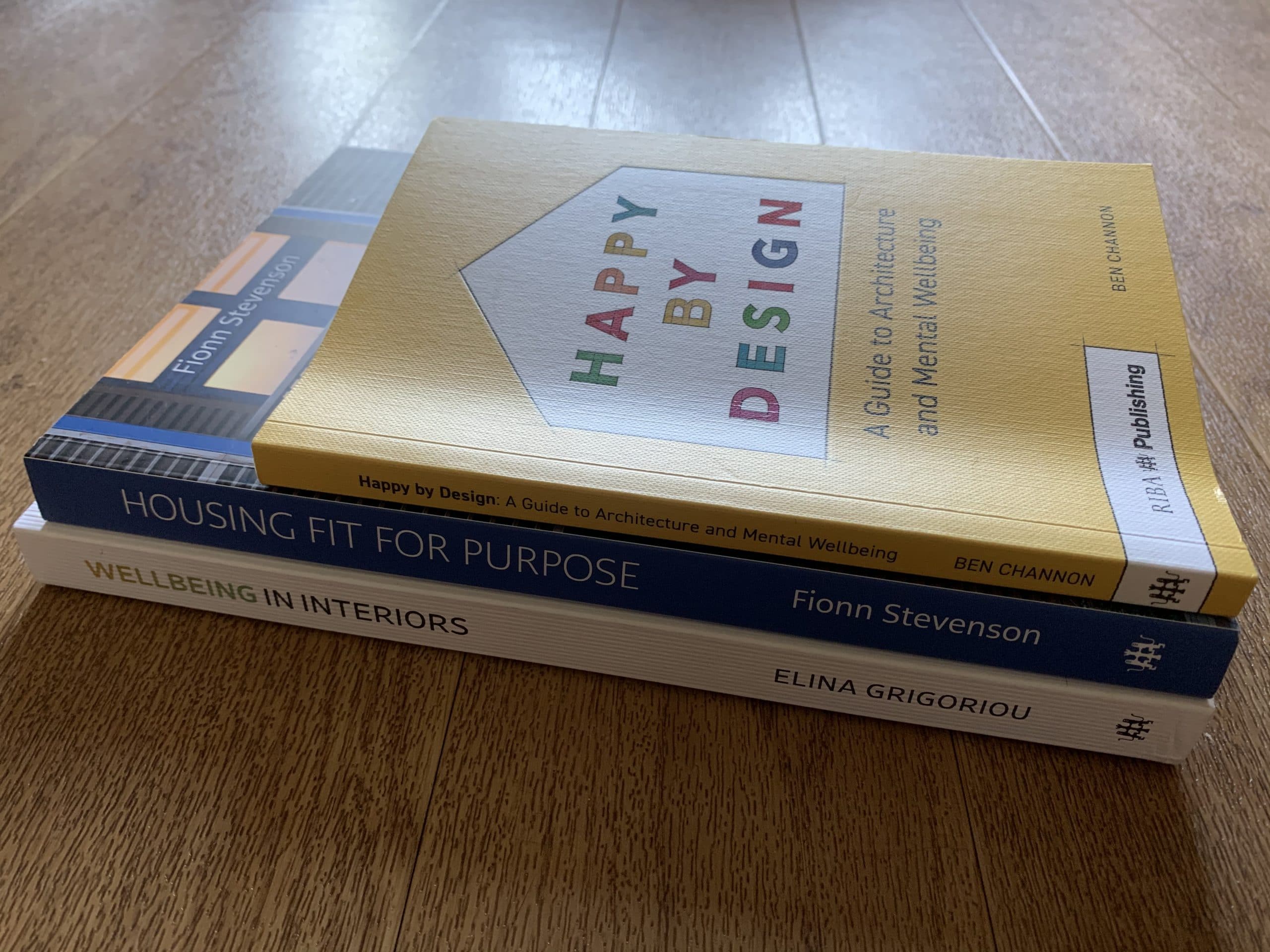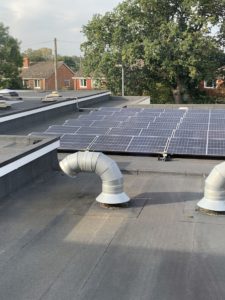This week, we’re making the most of the “quiet time” by reviewing three books all about sustainable design and wellbeing.
For a long time, we’ve been toying with the idea of bringing book reviews over to the blog. There’s an absolute wealth of industry specific literature out there – much of it with really unique, interesting messages and viewpoints – and we want to shine a light on it.
What better time than now?
With many of us currently staying in our homes due to lockdown, this could be a valuable opportunity to find out more about how the space we live and work in impacts our mental health and wellbeing.
Book one: Happy by Design – A Guide to Architecture and Mental Wellbeing by Ben Channon.
I was a big fan of this book. It felt especially poignant as Ben spent substantial points throughout the book talking about his own struggles with mental health and how this led him down the path of wellbeing.
Ben – who is an Architect and Assael Architecture – is now a Mental Wellbeing Practitioner, and accredited mindfulness practitioner and also founded the Architects’ Mental Wellbeing Forum. He is passionate about the way different design features can impact an occupants’ wellbeing, and this is clearly displayed throughout the book. It delivers a clear, concise guide, using simple diagrams to draw attention to some of the key concepts. It’s a useful tool for anyone, including those simply looking for help on the layout and interiors of their own home.
However, it truly is essential reading for architects; it should be on everyone’s shelf for a quick, regular reference. It reminds me of 101 Rules of Thumb for Low Energy Architecture by Huw Heywood; both present their information in such a digestible, concise way. Because of this, it isn’t a book that you have to read from front to back… it’s great to dip in and out of during project design.
Topics in the book include:
- Lighting design
- Occupant comfort
- Control and psychology
- Bringing nature into the design
- Design space for activity
At the end of the book, there’s a fantastic section with notes and references, guiding the reader towards further reading on each of the topics covered.
All in all, an inspiring and incredibly easy to absorb read!
Book two: Wellbeing in Interiors – Philosophy, Design and Value in Practice by Elina Grigoriou.
If you are looking for something a little more detailed, then we recommend our second book by Elina Grigoriou. Elina is an Interior Designer with 18 years of experience, specialising in sustainability and wellbeing in interior design. She’s based at The Building Centre, which – as a side note – is well worth a visit if you are in London!
The book may be targeted primarily toward interior design, but it covers many of the same principles that are applicable to architects and homeowners alike. Unsurprisingly, the book itself is beautifully presented – it would make the perfect display book in any interior design office.
But what’s inside the book is just as impressive. It covers an enormous range of topics right from initial occupant profiling through to final user feedback. Each topic is covered in depth, backed by theory, case studies and Elina’s own practical insights.
Some (of the many) areas it covers (and how they impact building layout and design) include:
- Maslow’s hierarchy of needs
- Fibonacci sequence
- Golden ratio
- Colour psychology
As well as design, the book also discusses occupant health and how venitalation – or lack thereof – can impact comfort, as well as the ramifications of different types of lighting.
It closes by measuring key performance criteria and the ways in which we can go about measuring occupancy wellbeing.
This was a fantastically in-depth, cohesive insight into the simple steps we can take to create more comforting, nourishing designs. A must-read.
Book three: Housing Fit for Purpose, by Fionn Stevenson.
Our final book review today focuses on performance, feedback and learning in the built environment. It’s written by Fionn, who holds a chair in Sustainable Design at the Sheffield School of Architecture. Over the past 20 years, he has been developing innovative methods of building performance evaluation; many of which have been amalgamated into this very book.
Unlike the other books covered previously, this one details the feedback loop needed to help improve future design. Occupant feedback has, for a long time, been part of the RIBA Plan of Works. However, it is an area that (historically) has not been completed very well; if at all. The aim of this book therefore is to give architects the knowledge to undertake post occupancy evaluations along with the benefits to future design.
What makes this really exciting is that this is an area I began looking at during my Master Degree back in 2002 as part of my dissertation. Then, occupant feedback was not something developers were really thinking about; but it was always an area I was fascinated with. Luckily, it looks like things are about to change: this book will 100% help us on our way.
Housing Fit for Purpose is an extremely detailed book offering guidance on feedback techniques as well as real world case studies. The underlying message promotes a need to bridge the gap between predicted performance at design and how a building actually performs when finally occupied.
Among a plethora of comprehensive topics, the book digs into:
- The variety of techniques used to gain feedback
- How to learn from physical building tests such as thermographic surveys, light measurements and CO2 sensors
- Assessment methodologies such as LEED and BREEAM and how these can encourage the use of post occupancy evaluations
I loved this book. It might be more technical than the previous books on the list, but it covers the topic in quite an extraordinary way. It also includes a number of tables that you can use to undertake your own evaluation.
I believe this is a staple for all forward thinking architects. It’s certainly one I will be returning to time and time again.
As we enter more uncertain times, the need to embrace wellbeing and create a space that can genuinely contribute to that is paramount. I, for one, will be employing the learnings throughout all of my future projects and daily life.





















